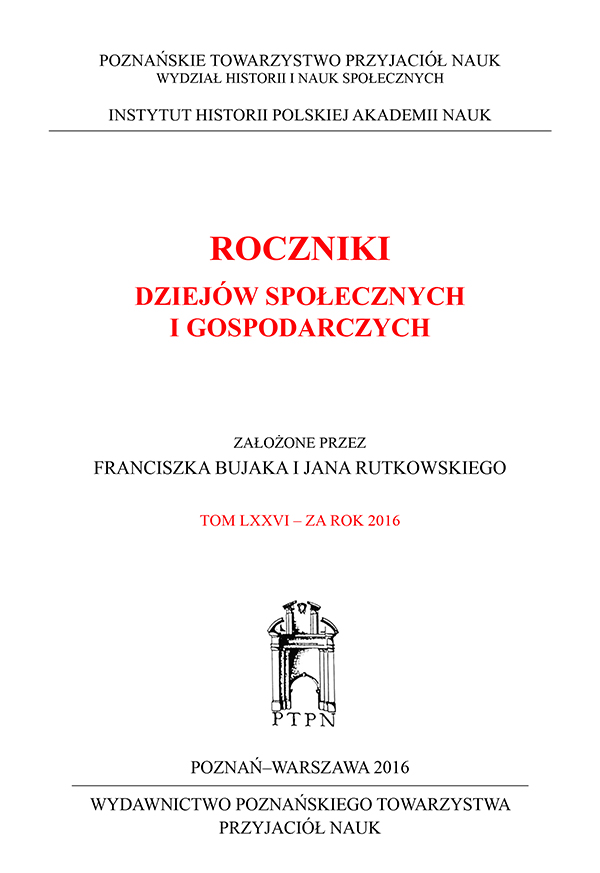Body height as a measure of the standard of living: Europe, America And Asia
DOI:
https://doi.org/10.12775/RDSG.2016.02Keywords
historical auxology, human ecology, body height, stature, technophysio evolution, secular trend, Poland, Japan, KoreaAbstract
Body height reflects the standard of living in the first 18–20 years of life, while its changes serve as an index measuring the wellbeing of the society. Steady growth of body height in the Polish territory started in the 1860s. The changes recorded in earlier periods were reversible: the highest average was noted in Late Middle Ages, with body height then regressing until mid-19th century. The evolution of body height in Japan and Korea is a reflection of genetic and environmental conditions. The Japanese were higher than Koreans in the mid-20th century, but as the level of economic development of both countries became equal, the height of Koreans surpassed the average height of the Japanese. Even more dramatic influence of the environment can be noticed in the comparison of the body height of South and North Koreans over the 20th century.References
Bielicki T., Szklarska A., Kozieł S., Welon Z., Transformacja ustrojowa w Polsce w świetle antropometrycznych badań 19-letnich mężczyzn, Wrocław 2003.
Czekanowski J., Zarys antropologii Polski, Lwów 1930.
Floud R., Wachter K., Gregory A., Height, Health and History: Nutritional Status in the United Kingdom, 1750–1980, Cambridge 1990.
Floud R., Fogel R.W., Harris B., Sok Chul Hong, The Changing Body: Health, Nutrition, and Human Development in the Western World since 1700, New York 2011.
Fogel R.W., Costa D.L., “A theory of technophysio evolution, with some implications for forecasting population, health care costs, and pension costs”, Demography 34, 1977, pp. 49–66.
Kimura M., “Standards of living in colonial Korea: Did the masses became worse off or better off under Japanese rule?”, Journal of Economic History 53, 1993, pp. 629–652.
Komlos J., “Shrinking in a growing economy? The mystery of physical stature during the Industrial Revolution”, Journal of Economic History 58, 1998, pp. 779–802.
Livi-Bacci M., Population and Nutrition: An Essay on European Demographic History, Oxford 1991.
Steckel R.H., “Heights and human welfare: recent developments and new directions”, Explorations in Economic History 46, 2009, pp. 1–23.
Wolański N., Biologiczny rozwój człowieka, ed. 8, Warszawa 2012.
Downloads
Published
How to Cite
Issue
Section
Stats
Number of views and downloads: 1072
Number of citations: 0



